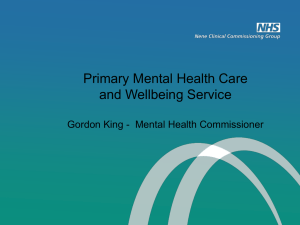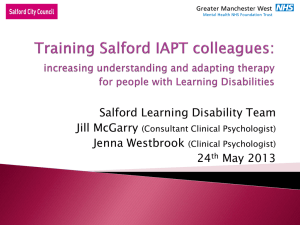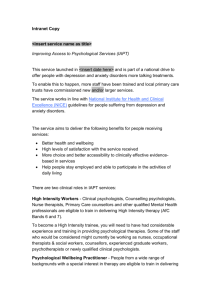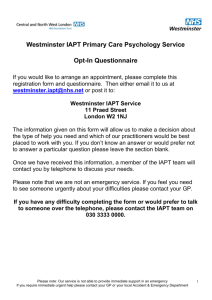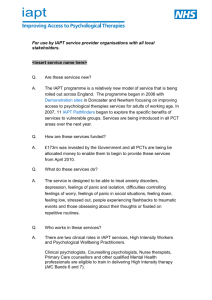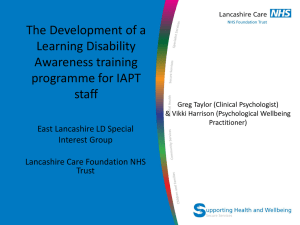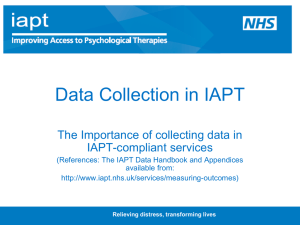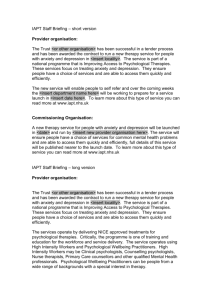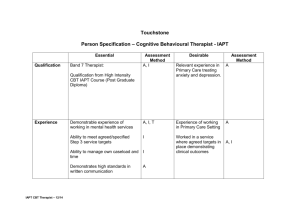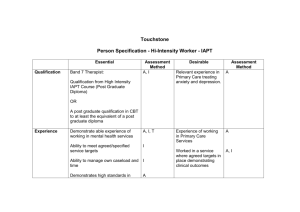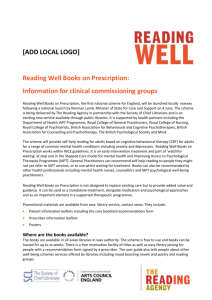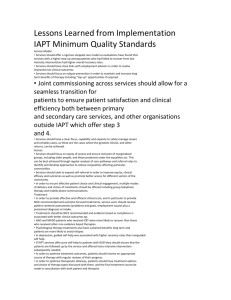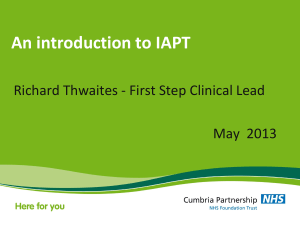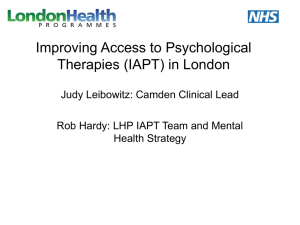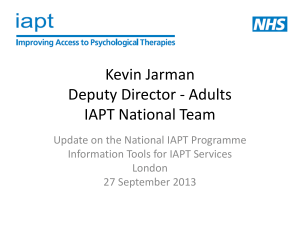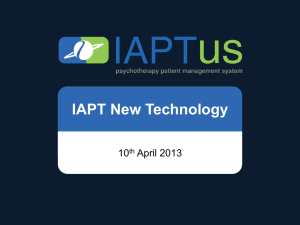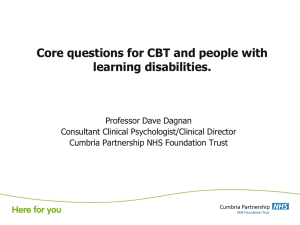IAPT employment support services
advertisement
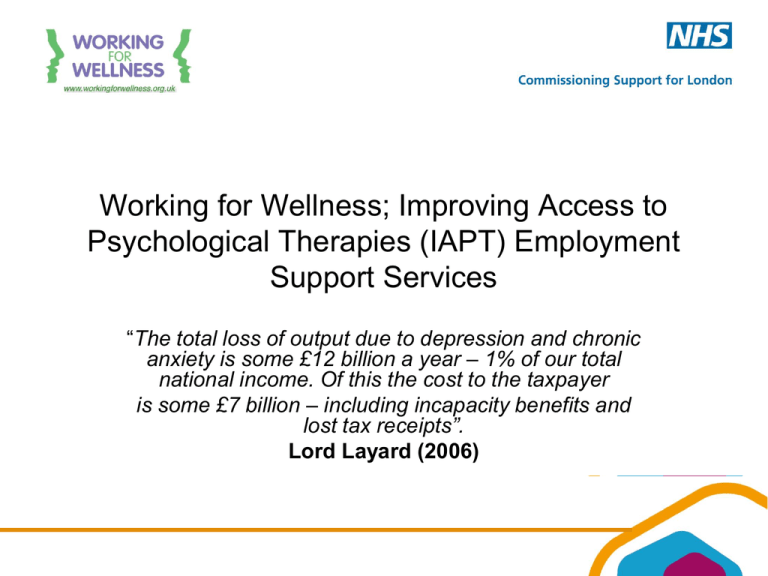
Working for Wellness; Improving Access to Psychological Therapies (IAPT) Employment Support Services “The total loss of output due to depression and chronic anxiety is some £12 billion a year – 1% of our total national income. Of this the cost to the taxpayer is some £7 billion – including incapacity benefits and lost tax receipts”. Lord Layard (2006) Employment business case "The positive link between employment and mental health is proven“* Unemployment has been identified as one of the ten most important contributors to the total burden of disease in the 1990s. ** Those in employment are more likely to recover from mental illness than those who are long-term sick or disabled (80% and 22% respectively over 18month follow-up). *** The proportion of unemployed persons in need of psychological treatment is more than double the proportion of considerably distressed employed persons (34% & 16% respectively).**** The risk for mental health problems continues to rise throughout the first nine months of unemployment * Each year, over 200,000 people with a mental health condition move onto incapacity benefits.** The relative risk of unemployed people developing symptoms of depression and anxiety is over double those who are not.*** Anxiety and depression are 2-3 times more likely in unemployed people & 4-10 times more likely if unemployed for over 12 weeks**** Each week one million people report sick, of which 3,000 remain off work six months later, and 80% of these will still be off work five years later.***** Unemployed people attend GP more than employed people* Only 8% of people using secondary MH services are in employment** 46% of those claiming Incapacity Benefit in London do so for a mental illness - largely anxiety disorders and depression - 122,000 people*** Of those in manual work, stress (43%) and mental illness (17%) are reported as major causes of sickness absence, in non-manual work it is even higher (52% % 25% respectively).**** Gaining or retaining employment leads to a more rapid and sustainable recovery Response IAPT has invested £49 million in London from 2008 – 2011. The regional targets for 2008-11 are to enable 4000 people to retain and/or return to employment. In London Working for Wellness has managed an additional resource allocation of £4.5million in Employment Support Services across 27 PCTs to help reach these targets. London Model: resource allocation to 15 Wave One and Two PCTs Specification: National £ £50K IAPT ESC Contribution Regional £ Dept of Health CSL £50K Contribution Local £ £100K+ PCT Match Funding and/ or demonstrate sufficient local “match resource” Local NB: IAPT Board decided that each “full” Wave 1 and Wave 2 Service should aim to invest £200K in order to employ a team of at least 3 employment support workers a£200K aComms model aLSP monies aService design aRetention/ Back to Work components aMarketing function aJSEPA aEmp Leads Network aROI (Emp Dataset) A pathway through a Wave 1&2 IAPT service in London Psychological Therapy (PT) Recovery Clinician Health Needs Integrated PT & ES interventions Referral Assessment Employment Needs Employment worker Employment Support (ES) Return to work/ retain job Additional products and services Realising the Benefits... Commissioners and Implementation Guidance (inc IAPT Employment Dataset) London IAPT Employment Leads Network IAPT Employment Training Curriculum MITIE Real Apprentice Scheme Royal Mail Linked Employer Scheme Working for Wellness – The Five Step Model Employer Engagement www.workingforwellness.org.uk Achievements and Future Plans Pioneering employment as a health intervention Integrated clinical and employment service Over 2000 people moved off sick pay and benefits into paid employment to date (as of March 2011) Designed Employment Dataset that has been taken on by national team Building first evidence base for primary care mental health employment services
